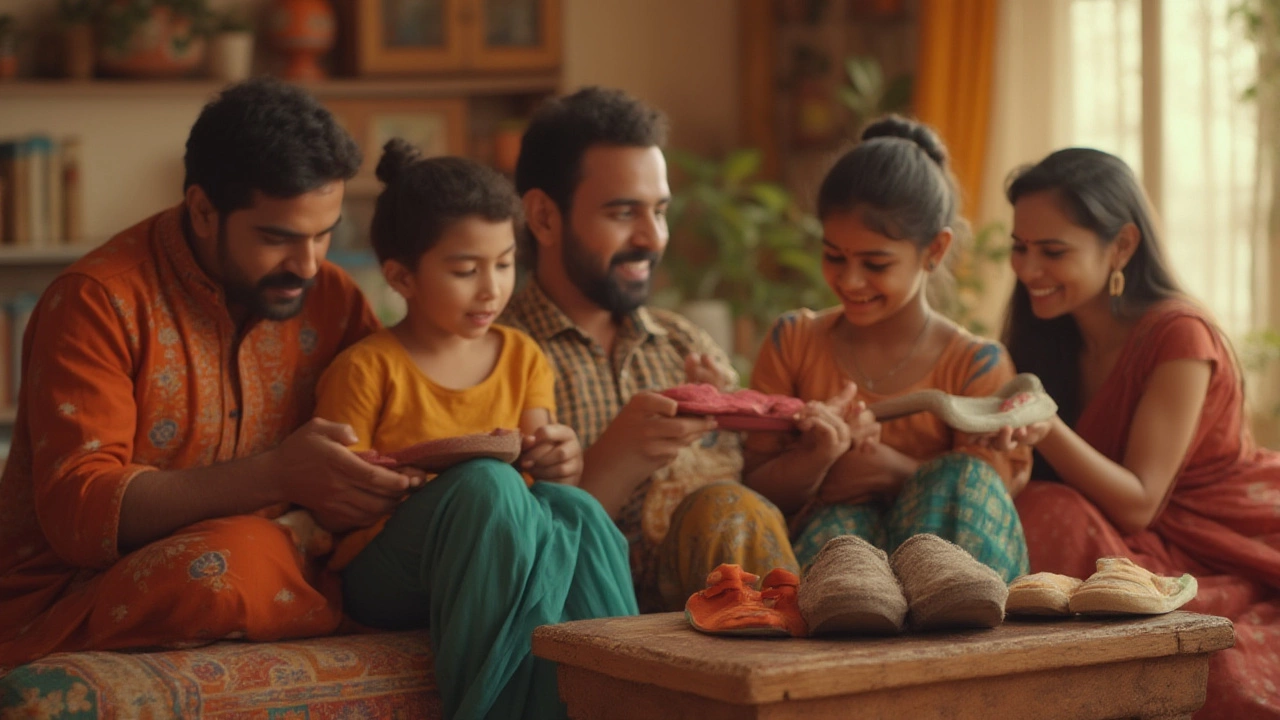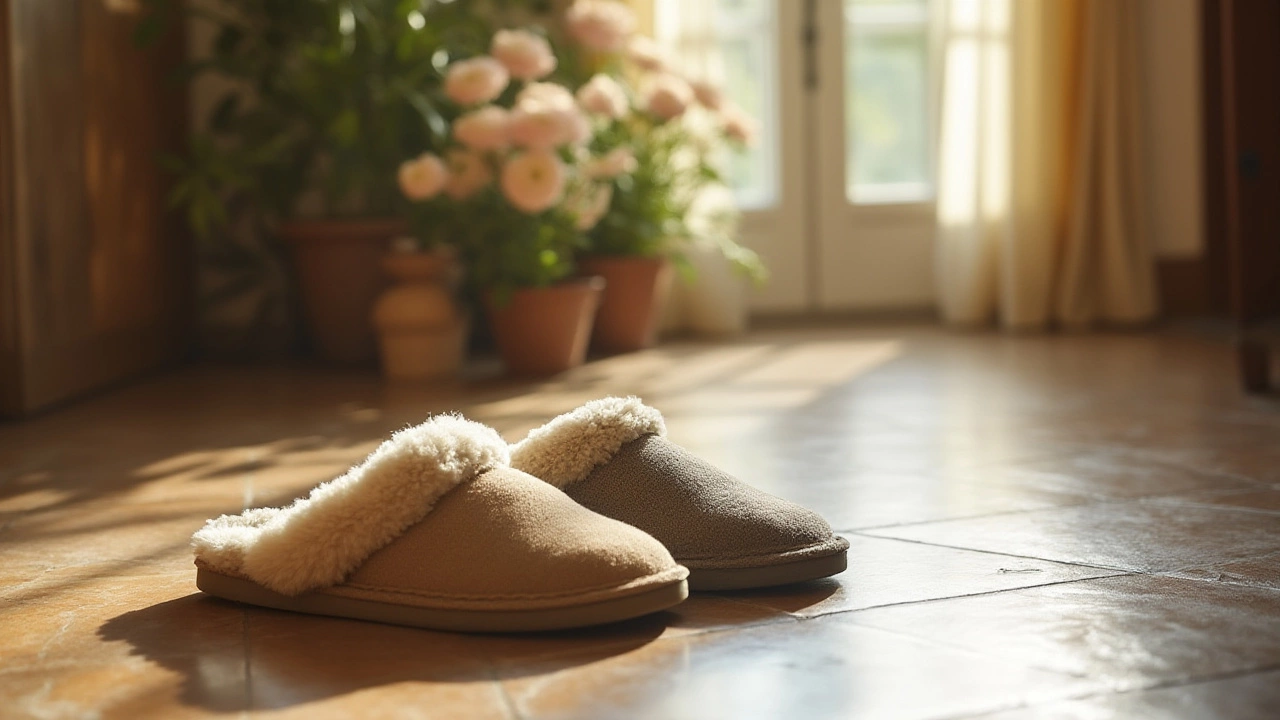Hard vs Soft Slippers: Which Is Best for Comfort and Support?

Step into a stranger’s house and one of the first things you’re handed might not be a drink or snack—it’s a pair of slippers. But here’s the catch: not all slippers are made the same. Some feel like fluffy clouds. Others are stiff as if you’ve slipped your foot inside a breadboard. This isn’t just some trivial fashion debate. Should slippers be hard or soft? The answer can change how your feet, knees, and whole body feel at home. The humble slipper is no longer just something to keep your toes warm. It’s now a big player in comfort, health, and even home culture. I’ll never forget watching my daughter Zara hop around the kitchen in those giant plush unicorn slippers—adorable, but were they really giving her feet a break after a long day? Let’s take a walk through the fascinating world of slippers and see what really matters the most.
Why Comfort Isn’t One-Size-Fits-All
If you think the softest slipper will always feel best, I get it—I’ve made that mistake, too. But feet are complicated. They’re made up of 26 bones, 33 joints, and more than a hundred muscles, tendons, and ligaments. Every single one of those parts can have an opinion about what feels comfy. The type of slipper you need depends on how your foot is shaped, the floors in your home, your day-to-day activities, and even your weight.
Soft slippers—those made out of plushies, fleece, or memory foam—do the obvious job: they’re gentle against the skin. In one 2023 survey shared by the American Podiatric Medical Association, over 60% of adults said they preferred soft slippers because their feet "felt hugged" at the end of the day. That's a lovely feeling. Kids like my daughter love them too; their bright colors, fun designs, and cushion make slipping into something that feels like walking on marshmallows irresistible.
But soft doesn’t always mean supportive. "Soft slippers feel wonderful, but excessive cushioning with no arch support can allow feet to collapse inwards, creating problems like plantar fasciitis or increased foot fatigue," said Dr. Danielle Desruisseau, podiatrist at Massachusetts General Hospital. And she’s not just talking about older people. Anyone who’s ever worn cheaply made, over-padded slippers for weeks knows that the initial comfort doesn’t always last—eventually the foam packs down, loses bounce, and actually becomes flat beneath your heel, reducing support.
Hard slippers, on the other hand, have a reputation for being less cozy. They might be made of rubber, structured leather, or tough cork. These materials can feel like a rude awakening to your sleepy toes. But, a firmer sole often means more actual support under the arch and heel. People with low arches or people prone to foot pain often end up appreciating the stability. As the Cleveland Clinic found in a 2022 case study, firmer slippers "reduce pronation and add alignment to the foot structure, especially on hard floors." If your home is mostly tile, concrete, or hardwood, a harder slipper may shield your feet from pounding, unlike soft ones that just collapse.
This is where parent logic kicks in: I want what keeps Zara’s growing feet healthy, but I also want her to enjoy wearing her slippers. What works for me—skimping on plush for some arch support—doesn’t always make her jump for joy. And, believe it or not, foot comfort isn’t always about foot softness. Your age, your health, your daily activities—these all matter just as much as how fluffy a slipper feels.
Hard Slippers: The Case for Structure and Protection
Think of hard slippers as the bootcamp trainers of the slipper world. They don’t cuddle—but they sure hold things together. People with a history of foot conditions such as plantar fasciitis, bunions, or arthritis are often told by podiatrists to stay away from soft-soled slippers altogether. Without firmness and support, your foot can roll or collapse, worsening underlying conditions.
The benefits don’t stop at support. Hard slippers can take a beating—making them a great choice if you like to step outside for the mail, take out the trash, or even cook dinner for hours. Their soles resist moisture and dirt, so they survive both indoor and outdoor meanders. The risk of stepping on a LEGO or random sharp object (hello, parenting!) is lower with a firmer base. As someone who’s tiptoed onto a piece of plastic fruit in the living room, this counts for a lot.
Check out this little table to get a sense of what materials make up typical hard slippers and why they’re chosen:
| Material | Benefits |
|---|---|
| Rubber | Excellent grip, water resistance, durability |
| Cork | Natural shock absorption, molds to foot over time |
| Leather | Sturdy, breathable, good for moldable comfort |
| Thick EVA foam | Lightweight, provides strong arch support |
But let’s be real—hard doesn’t mean harsh. Plenty of high-quality hard slippers add light padding just around sensitive areas, like the ball of the foot or heel, to give a "Goldilocks" experience: not too soft, not too hard. Hybrid slippers with a firm sole but a cozy upper make a great compromise for people who want all-day foot health with some plush comfort at the top.
Kids are often drawn to whatever slipper is easiest to slide on quickly—sometimes at the expense of their own foot health. It’s good to remind yourself (and them) that a little resistance when putting a slipper on means more stability when jumping off the bed.
"A good house slipper should provide structure underfoot, just like an outdoor shoe. Look for options with built-in arch support and a slightly raised heel to reduce heel pain over time." – American Orthopaedic Foot & Ankle SocietyThe takeaway: Hard slippers might get a bad rap for feeling stiff at first, but over time, they can help reduce foot fatigue, improve posture, and protect you from the messes that always seem to end up on the kitchen floor.

Soft Slippers: When Cushion – and Coziness – Matter Most
Now, I admit, slipping your feet into a soft, plush pair of slippers is a kind of luxury everyone should experience at least once. There’s a reason spa days and hotel suites always come stocked with these. Soft slippers are about instant gratification. The kind of comfort that invites you to collapse on your favorite chair and forget about the day.
These slippers are usually packed with foam, faux fur, fleece, or even real wool. They keep your feet warm, which isn’t just a psychological comfort—there’s real science backing this up. Warmer limbs help regulate entire body temperature, signal safety to the nervous system, and even encourage deeper relaxation, according to research from the UK’s Sleep Council. Little wonder Zara drags her unicorn slippers from room to room, even in July.
Soft slippers excel for low-activity, carpeted areas. If you don’t walk much at home or your flooring is already cushy, the slipper doesn’t have to work as hard. People with healthy, pain-free feet often gravitate toward these because there’s no discomfort or risk from lack of support. If you have sensitive skin or circulation issues, soft lining can be a necessity—scratchy materials can rub, causing blisters or hot spots.
The downside? Most super-cushy slippers have little to no arch support. The material breaks down quickly—like those memory foam types that feel wonderful for a month and then compress to a pancake come autumn. Shoes, and especially slippers, are often shaped by culture and climate. In cold northern countries, soft slippers are a tradition; in warmer ones, you’re more likely to see hard slippers or nothing at all.
Here are a few practical tips for getting the most out of soft slippers:
- If you like squishy slippers, look for models with a firmer midsole or those labeled with "medium density foam" that helps keep the shape.
- Choose slippers with removable inserts so you can add orthopedic insoles if you need extra support.
- Opt for those with moisture-wicking lining if sweaty feet are a problem (wool and some synthetic blends work best).
- If you notice your slippers feel uneven or “lean” to one side, it’s time for a replacement.
Rip open any soft slipper after a year of use and you’ll probably notice how uneven the inside looks. That’s normal. Adult feet weigh a lot more than kids'—and slippers have to handle daily pounding. So, if they’re your main footwear at home, you may need to replace them at least once a year (sometimes sooner in damp climates).
How to Pick the Best Slippers for Your Feet
If you’re still wondering which type is best, let’s break it down with your health, your home, and practical life in mind. The secret? There’s no single "right" answer for everyone—especially when our bodies and lifestyles are all a bit different. But here’s what you can look for to make the smartest—and coziest—choice.
- Know your flooring: Got tile or hardwood? Harder slippers with arch support win here. Carpet throughout? Softer options probably won’t wreck your alignment.
- Foot issues: Bunions, heel pain, or flat feet? Always lean toward structured slippers with built-in arch or the option to add an insole. High arches? Extra cushy works if there’s some support in the midsole.
- Hygiene: Slippers that get sweaty or dirty need to be easy to wash or have replaceable liners.
- Climate: Damp or cold climates are perfect for plush slippers. Warmer environments might call for leather or cork with good breathability.
- Family considerations: For kids, balance fun with safety—a slipper should never be so floppy they trip. For elders, slip-resistance and stability are crucial.
| Criteria | Hard Slippers | Soft Slippers |
|---|---|---|
| Support | Excellent | Minimal to moderate |
| Warmth | Less unless lined | High |
| Durability | High | Low-Moderate |
| Outdoor use | Good | Poor |
| Easy to clean | Varies | Usually machine washable |
If you’re like me and want the best of both worlds, try a hybrid. Many brands now offer slippers with sturdy soles and plush linings—so the support is there, but your feet get their daily treat. Look for slippers that bend only at the ball of the foot—not all over. Try them on both morning and evening (feet swell during the day) before you decide. Slippers aren’t just another purchase—these things become your at-home sidekick, carrying you through chores, midnight fridge raids, and Sunday morning coffee runs.
If in doubt, ask your local footwear store for a fitting—yes, even for slippers! And as Zara would say, if they’re comfy enough to dance in, they’re probably good enough for your feet.
- Jul, 29 2025
- Violet Greenfield
- 0
- Permalink
Written by Violet Greenfield
View all posts by: Violet Greenfield